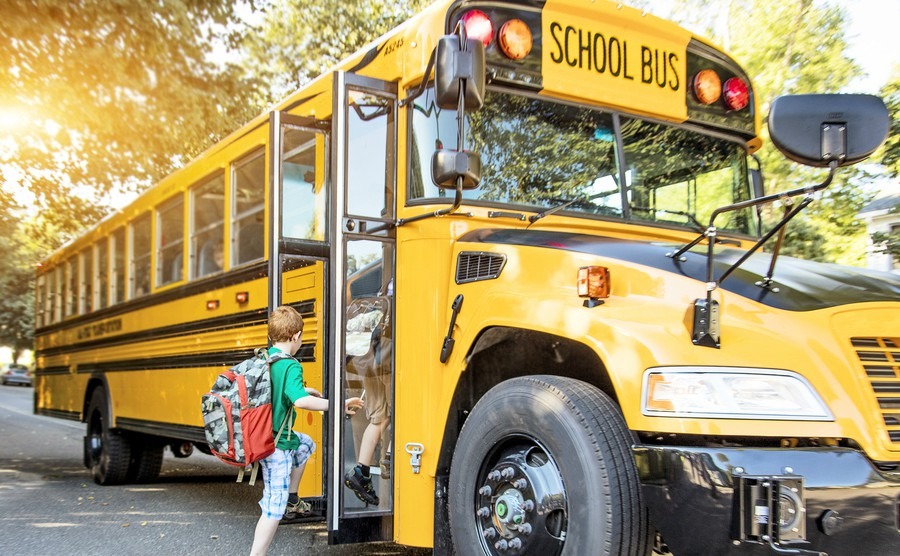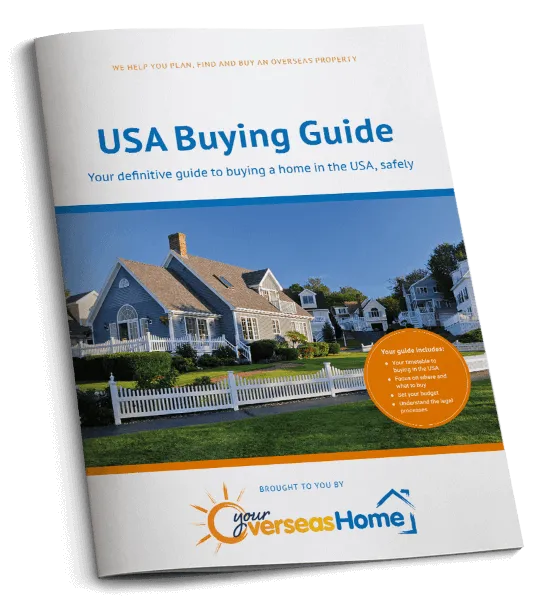Anyone who watches TV probably knows American schools better than our own. From “junior prom” to yellow buses, from Principal Skinner and Mrs Krabappel in The Simpsons to Walter White in Breaking Bad, even the teaching faculty are like old friends.
That familiarity, and our useful ally the English language, should make settling your kids in to a US school a doddle. But will the reality match the TV version? And how does the system work?
How good the school system is and how many options you have available to you will depend upon the state that you are moving to.
Find homes in the USA via our property portal.
Are US schools any good?
Like in almost every nation, people in the US are apt to criticise their state education system, whether for being under-funded or mismanaged. Of course it varies from region to region across the country, but on a national level independent analysis suggests American education is good, if not exactly at the top of the class. The Organisation for Economic Co-operation and Development (OECD) ranked US education as 21st out of its 38 countries, but bear in mind that the UK came behind the US, in 25thplace. According to its PISA rankings (Programme for International Student Assessment), which tested 15-year-old pupils’ level of scholastic ability, US pupils were in 40th place for mathematics, 25th place for science and 24th place for reading. By comparison, the UK was in 27th, 15th and 22nd place respectively, ahead of the US in every element.
Schooling in the US is free and compulsory. The standard of a “public school” (i.e. state school, not to be confused with British public schools which are in fact private!) will depend on many factors, but you are never short of data in the US, and that includes schools. There are many independent ratings websites, including Niche.com
If the schools in your area don’t look good enough, there are private school options too, which are detailed below.
One thing that the US can claim, however, is the best tertiary education system in the world, with 15 US universities in the international top 20 including such iconic names as MIT, Harvard and Yale.

Off to school on the traditional yellow bus
School ages?
Compulsory education in the USA starts at five years old and ends at 16 in some states or at the end of high school in others. Most children will start pre-school at age three or four. Schools separate into three levels; Elementary School (kindergarten to grade 5), Middle School/ Junior High (grade 6 to grade 8) and High School (grade 9 to grade 12).
Middle School acts as a bridge from primary education into the more specialised programmes of study you find in High School. When they have reached High School, your child will focus on key topics relating to maths, science, social sciences, physical education and English. This is the stage when your child will start taking modules that will help them to get onto certain college courses or to win scholarships.
Your child will work towards their High School Diploma and the grade they achieve will determine which college or university they can attend. The terms of this diploma depend upon what has been specified by the state. Most US schools offer advanced courses for gifted students, which allow them to earn more credit. With some universities, especially the most prestigious, a simple High School Diploma will not suffice.
If your children are more vocationally-minded, you can send them to a vocation-focused school, where classes will be more practical or technical.
Which school system is right for my kids?
Public school
Public school in the USA is free of charge and expatriate children are eligible to attend in their local area. These schools are usually paid for by property taxes, which means that the more upmarket areas have the better funded schools. You should expect to pay some costs, but these are minimal and are for essentials like books, equipment, uniform and school trips. There aren’t any fees for tuition. Finding a local school has the added perk of helping your children to get to know the other children in the neighbourhood, hopefully helping them to settle in faster.
International school
If you are only planning on living in the USA for a couple of years, you might decide to send your children to an international school. The perk of these schools is that they follow an international curriculum, which means it shouldn’t be as tricky to transition into learning there. The majority of international schools in the USA are located in the biggest cities. You can find a list by visiting the International Baccalaureate Organization’s website. It’s worth noting that these schools tend to have long waiting list – so make your application well in advance.
Private school
The US private school system is excellent. The teachers have more freedom with the curriculum and because of the high fees the kids get to enjoy an excellent range of on-site facilities and extra-curricular activities all year round. If your child has special needs, these schools offer more one-to-one guidance. Places at some private schools are very highly sought after, in which case they tend to be very selective about who they accept.
Private schools based on religious faith are another option, often relatively inexpensive too. While these schools may represent a particular religion, it’s not uncommon for them to accept pupils from a range of faiths.
You could also do like President Trump’s parents and ship him off to military school. These are High Schools with a strong emphasis on martial values and physical fitness.
Charter schools
Another popular option is to send your children to a charter school. These receive less funding from the public and more from private sources. There are fewer regulations imposed by the state, which means more flexibility with the curriculum. These schools are also highly sought after and often operate an admission lottery system to fairly determine who secures a place.
If your child is interested in a particular area of study, a “magnet school” could help them to deepen their studies in the areas that mean the most to them.
Magnet schools
Magnet schools are another free school system for elementary and secondary school students. If your child is interested in a particular area of study, this could be the best option to help them to deepen their studies in the areas that mean the most to them. Magnet Schools might focus on languages, Performing Arts or Science, Technology, Engineering and Maths (also known as STEM). Some of these schools won’t have entrance criteria, but they might use a random computer-based lottery system for admissions, as interest is so high.

Elementary school children
How to choose a school
Of course you’ll want to do all you can to help your children feel as happy and settled as possible in their new schools. This is why you should involve them in the school search – there may be particular places that they like the look of, where they are interested in the extra curricular activities, or where a department they are keen on is particularly strong. If your child has specific interests or needs, be sure to question how the school will cater to these factors. Always visit the school to check out the facilities, meet the teachers and to get a feel for the place.
There is a lot of information online nowadays about schools. You’ll be able to browse their websites and read lots of reviews. You can also contact the local school district in your state for recommendations. Many real estate agents will offer detailed information about local schools and particular neighbourhoods as a part of their service, so it’s always worth asking. They’ll be happy to share this information with you – especially if it might help you to buy a house.
The higher education system in the USA is considered the best in the world.
Higher education
If your child wants to go into higher education, they will need to establish the particular entry requirements for the institutions they are interested in. As mentioned, sometimes a High School Diploma isn’t sufficient to secure a place at a top university or college – it might be necessary to take additional tests or fulfil further requirements to secure a place.
College or university lasts four years, and your ‘child’ will emerge with a bachelor’s degree. After this, they may decide to complete a master’s degree or attend graduate school. There are lots of incredibly prestigious colleges all across the USA, but do bear in mind that many of them cost a small fortune to attend! It’s common for people to attend a college within their home state, as this is a cheaper option than heading interstate.
So you know the schools are good but what about American healthcare? Download our brand new guide, Healthcare Abroad 2018

Download your free USA property guide
Our guide to buying a house in America is readily available online, but you can also a PDF version to view when you're offline or print. Simply fill in the form to the right and you'll be able to download your free copy.
- Ask the right questions
- Avoid the legal pitfalls
- Find your property
- Avoid losing money
- Move in successfully










